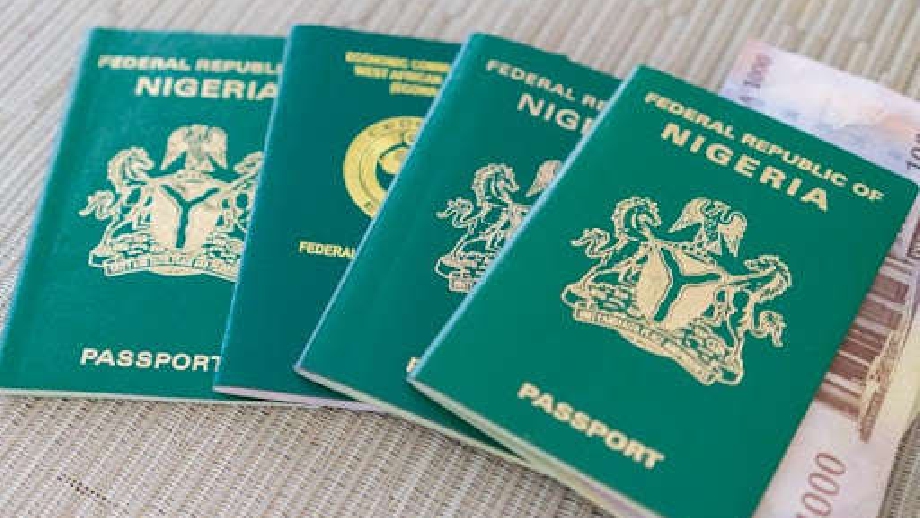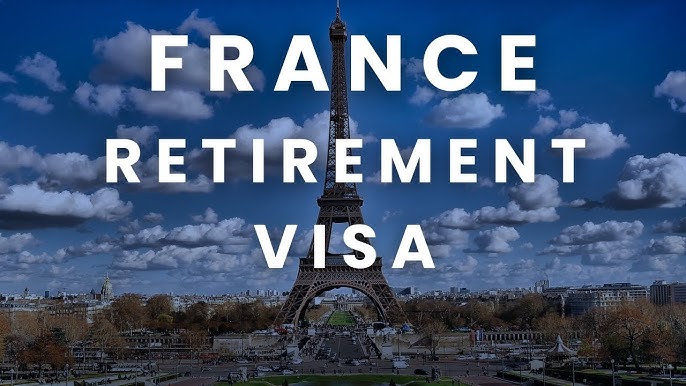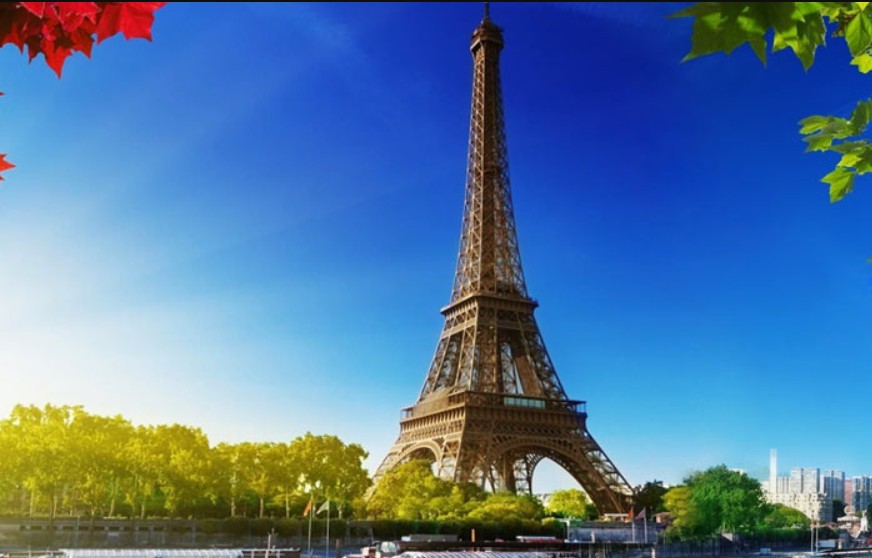Travel/Tourism
Arctic Indigenous People and Their Traditional Culture: Potential for Tourism Development

By Professor Maurice Okoli
The Arctic region is a geographic region spreading around the North Pole. It is the Northernmost region of the earth characterized by distinctively polar conditions of climate, plant, and animal life, Physical features breathtaking landscapes and unique ecosystems which are home to diverse Indigenous cultures, including the Inuit, Saami, and Chukchi people.
These cultures have thrived for thousands of years, developing rich traditions and ways of life intimately connected to the land and its resources. The Arctic is very important not just because it helps keep our world’s climate in balance but the Arctic sea ice acts as a huge white reflector on the top of the planet, bouncing some of the sun’s rays back into space and helping keep the earth at an even temperature.
As global interest in the Arctic grows, particularly in the context of climate change and environmental conservation, tourism has emerged as a significant factor influencing Indigenous communities. This paper explores the intricate relationship between Arctic Indigenous cultures and tourism, highlighting both the opportunities and challenges that arise from this interaction.
The Richness of Arctic Indigenous Cultures
Arctic Indigenous peoples possess a deep understanding of their environment, which is reflected in their languages, arts, and traditional practices. Their cultures are often characterized by a profound respect for nature, with belief systems that emphasize harmony with the land, animals, and natural elements which encompasses traditional knowledge, skills, and practices essential for survival in the Arctic.
This cultural heritage is expressed through storytelling, music, dance, and crafts, such as intricate carvings and textiles. The preservation of these cultures is vital not only for the communities themselves but also for the broader understanding of human adaptation to extreme environments. As climate change threatens traditional ways of life, the resilience of Arctic Indigenous cultures becomes increasingly important. Tourism, when approached thoughtfully, can play a role in preserving these traditions and ensuring that Indigenous voices are heard.
Indigenous tourism in the Arctic: Opportunities for Indigenous Communities
Indigenous tourism refers to the activities and experiences that are rooted in the culture and tradition of the indigenous communities. These experiences are often led by the Indigenous people themselves ensuring authenticity and original representation of their heritage. The rise of Arctic tourism presents numerous opportunities for Indigenous communities. Eco-tourism and cultural tourism allow visitors to engage with Indigenous cultures in meaningful ways, fostering respect and understanding.
Many Indigenous groups have begun to develop their tourism initiatives, offering guided tours, cultural workshops, and authentic experiences that showcase their heritage. This not only provides economic benefits but also empowers Indigenous peoples to reclaim narratives about their cultures. Through tourism, Indigenous communities can share their stories, traditions, and knowledge with a global audience.
This exchange promotes cultural growth and can lead to increased awareness of the challenges faced by these communities, including the impacts of climate change and the need for sustainable practices. Furthermore, the revenue generated from tourism can be reinvested into community development, education, and the preservation of cultural practices.
Challenges of Indigenous Tourism in the Arctic
Tourism in the Arctic poses significant challenges. One major concern is the risk of cultural commodification, where Indigenous traditions are reduced to mere attractions for tourists. This can lead to misrepresentation and a dilution of cultural practices, undermining their significance within the community. Tourism initiatives must be led by Indigenous peoples themselves, ensuring that their cultures are represented authentically and respectfully.
Moreover, the influx of tourists can strain local resources and disrupt traditional ways of life. Environmental degradation, including increased waste and disturbance of wildlife, poses a direct threat to the delicate Arctic ecosystem. Indigenous communities are often at the forefront of these changes, facing the dual challenge of preserving their cultures while managing the impacts of tourism.
Conclusion
Management of the relationship between Arctic Indigenous cultures and tourism is complex and multifaceted. While tourism offers opportunities for cultural exchange, economic development, and increased awareness of Indigenous issues, it also presents challenges that must be navigated carefully. Tourism in the Arctic must be developed in collaboration with Indigenous communities. By respecting and honouring the rich cultural heritage of Arctic Indigenous peoples, tourism can become a powerful tool for cultural preservation and sustainable development, fostering a deeper understanding of the Arctic’s unique and fragile environment.
Professor Maurice Okoli is a fellow at the Institute for African Studies and the Institute of World Economy and International Relations, Russian Academy of Sciences. He is also a fellow at the North-Eastern Federal University of Russia. He is an expert at the Roscongress Foundation and the Valdai Discussion Club.
As an academic researcher and economist with a keen interest in current geopolitical changes and the emerging world order, Maurice Okoli frequently contributes articles for publication in reputable media portals on different aspects of the interconnection between developing and developed countries, particularly in Asia, Africa and Europe. With comments and suggestions, he can be reached via [email protected]
Travel/Tourism
FG to Introduce Biometric Single Travel Emergency Passport 2026

By Adedapo Adesanya
The federal government has announced plans to introduce the new biometric emergency travel document, the Single Travel Emergency Passport (STEP), by 2026 as part of reforms aimed at modernising Nigeria’s immigration processes and strengthening border security.
Initially revealed in November, the Comptroller General of the Nigeria Immigration Service (NIS), Mrs Kemi Nandap, speaking on Monday in Abuja during the decoration of 46 newly promoted Assistant Comptrollers of Immigration (ACIs) to the rank of Comptrollers of Immigration, said the proposed STEP would replace the current Single Travel Emergency Certificate (STEC) and is designed to enhance efficiency, security, and global acceptability of Nigeria’s emergency travel documentation.
She explained that the new emergency passport would be biometric-based and deployed through alternative, technology-driven platforms to ensure seamless service delivery.
“I’m looking forward to embracing 2026, which will also be part of all the reforms we’re doing to ensure that we optimise our services, in terms of visas, passport production lines and our contactless solutions,” she said.
The NIS boss noted that the STEP is one of several technology-driven innovations being rolled out by the Service to improve operational efficiency and meet its constitutional mandate.
She also highlighted the recent introduction of the ECOWAS National Biometric Identity Card (ENBIC), describing it as a critical step towards seamless regional integration and secure cross-border movement within West Africa.
“We want to ensure that our processes are seamless. The STEP, which we are going to launch early next year, is another key programme that will further strengthen our service delivery,” Nandap added.
The Comptroller General charged the newly decorated officers to demonstrate heightened vigilance, professionalism, and integrity, particularly in light of Nigeria’s prevailing security challenges.
“Your decoration today symbolises the trust reposed in you and carries with it expectations of enhanced leadership, sound judgement, accountability and exemplary conduct,” she said.
Mrs Nandap stressed that officers at senior levels must combine professional competence with strong leadership qualities, including clarity of vision, decisiveness, empathy, and the ability to mentor and inspire subordinates.
“Considering the current security challenges our nation faces, we must remain vigilant and unrelenting in the fight against multifaceted threats. Your actions will set the tone and reflect the core values and reputation of this Service,” she warned.
She reaffirmed the Service’s zero tolerance for indolence and unprofessional conduct, urging officers to embrace innovation, adapt to emerging challenges, and place the interest of the NIS above personal considerations.
Travel/Tourism
Moving to France After Retirement: What You Need to Know First

The idea of spending retirement in France comes up often — sometimes because of the climate, sometimes because of the healthcare system, and sometimes simply because of the way everyday life is organised there. But once the initial appeal fades, a practical question usually follows: under what conditions can a retiree actually live in France legally?
The short answer is: it’s possible.
The longer answer requires a closer look.
No “retirement visa,” but a workable solution
Unlike some countries, France does not offer a dedicated retirement visa. This often comes as a surprise. In practice, however, most retired foreigners settle in France under the long-stay visitor visa — a residence status that is not tied to age or professional background.
The logic behind it is straightforward: France allows people to live in the country if they do not intend to work and can support themselves financially. For this reason, the visitor visa is used not only by retirees, but by other financially independent residents as well.
Income matters more than age
When an application is reviewed, age itself is rarely decisive. Financial stability is.
French authorities do not publish a fixed minimum income requirement. What they assess instead is whether the applicant has sufficient and reliable resources to live in France without relying on public assistance. This usually includes:
- a state or private pension;
- additional regular income;
- personal savings.
In practice, the clearer and more predictable the income, the stronger the application.

Housing is not a formality
Relocation is not possible without a confirmed place to live. A hotel booking or short-term accommodation is usually not enough.
Applicants are expected to show that they:
- have secured long-term rental housing;
- own property in France;
- or will legally reside with a host who can provide accommodation.
This is one of the most closely examined aspects of the application — and one of the most common reasons for refusal.
Healthcare: private coverage first
At the time of application, retirees must hold private health insurance valid in France and covering essential medical risks. This requirement is non-negotiable.
Access to France’s public healthcare system may become possible after a period of legal residence, but this depends on individual circumstances, length of stay, and administrative status. It is not automatic.
What the process usually looks like
Moving to France is rarely a single step. More often, it unfolds as a sequence:
- applying for a long-stay visa in the country of residence;
- entering France;
- completing administrative registration;
- residing legally for the duration of the visa;
- applying for renewal.
The initial status is typically granted for up to one year. Continued residence depends on meeting the same conditions.
Restrictions people often overlook
Living in France under a visitor visa comes with clear limitations:
- working in France is prohibited;
- income from French sources is not allowed;
- social benefits are not part of this status.
These are not temporary inconveniences, but core conditions of residence.
Looking further ahead
Long-term legal residence can, over time, open the door to a more permanent status, such as long-term residency. In theory, citizenship may also be possible, though it requires meeting additional criteria, including language proficiency and integration.
For many retirees, however, the goal is simpler: to live quietly and legally, without having to change status every few months.
Moving to France after retirement is not about a special programme or age-based privilege. It is a question of preparation, financial resources, and understanding the rules. For those with stable income and no intention to work, France offers a lawful and relatively predictable way to settle long-term.
No promises of shortcuts — but no closed doors either.
Travel/Tourism
Trump Slams Partial Travel Ban on Nigeria, Others Over Security Concerns

By Adedapo Adesanya
The United States President Donald Trump has imposed a partial travel restriction on Nigeria, as part of a series of new actions, citing security concerns.
The latest travel restriction will affect new Nigerians hoping to travel to the US, as it cites security concerns and difficulties in vetting nationals.
The travel restrictions also affect citizens of other African as well as Black-majority Caribbean nations.
This development comes months after the American President threatened to invade the country over perceived persecution against Christians.
President Trump had already fully banned the entry of Somalis as well as citizens of Afghanistan, Chad, Republic of the Congo, Equatorial Guinea, Eritrea, Haiti, Iran, Libya, Myanmar, Sudan, and Yemen.
The countries newly subject to partial restrictions, besides Nigeria, are Angola, Antigua and Barbuda, Benin, Dominica, Gabon, The Gambia, Ivory Coast, Malawi, Mauritania, Senegal, Tanzania, Tonga, Zambia and Zimbabwe.
Angola, Senegal and Zambia have all been prominent US partners in Africa, with former president Joe Biden hailing the three for their commitment to democracy.
In the proclamation, the White House alleged high crime rates from some countries on the blacklist and problems with routine record-keeping for passports.
The White House acknowledged “significant progress” by one initially targeted country, Turkmenistan.
The Central Asian country’s nations will once again be able to secure US visas, but only as non-immigrants.
The US president, who has long campaigned to restrict immigration and has spoken in increasingly strident terms, moved to ban foreigners who “intend to threaten” Americans, the White House said.
He also wants to prevent foreigners in the United States who would “undermine or destabilize its culture, government, institutions or founding principles,” a White House proclamation said.
Other countries newly subjected to the full travel ban came from some of Africa’s poorest countries — Burkina Faso, Mali, Niger, Sierra Leone and South Sudan — as well as Laos in southeast Asia.
-

 Feature/OPED6 years ago
Feature/OPED6 years agoDavos was Different this year
-
Travel/Tourism9 years ago
Lagos Seals Western Lodge Hotel In Ikorodu
-

 Showbiz3 years ago
Showbiz3 years agoEstranged Lover Releases Videos of Empress Njamah Bathing
-

 Banking8 years ago
Banking8 years agoSort Codes of GTBank Branches in Nigeria
-

 Economy3 years ago
Economy3 years agoSubsidy Removal: CNG at N130 Per Litre Cheaper Than Petrol—IPMAN
-

 Banking3 years ago
Banking3 years agoFirst Bank Announces Planned Downtime
-

 Banking3 years ago
Banking3 years agoSort Codes of UBA Branches in Nigeria
-

 Sports3 years ago
Sports3 years agoHighest Paid Nigerian Footballer – How Much Do Nigerian Footballers Earn













